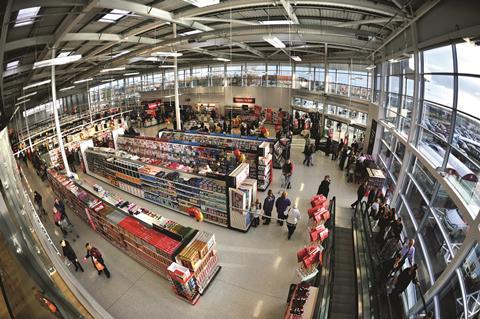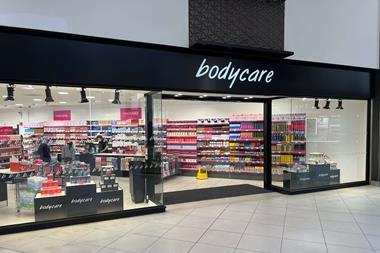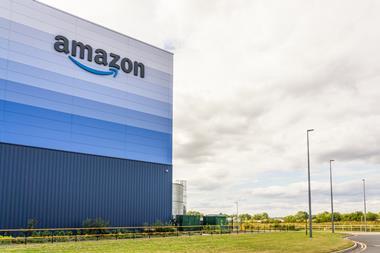When it comes to facilities management in retail, a one-size-fits-all approach is impossible. Caroline Parry discusses the best approaches.

Every retailer has a unique set of assets and the facilities management strategy must reflect that.
Today’s facilities management market offers myriad solutions. Some retailers use a mix of delivery solutions including in-house teams and single-service suppliers, while some outsource a bundle of soft services such as cleaning to a contractor while handling others in-house. Others outsource the entire responsibility, and some opt to create joint ventures, making an outsourced team part of the business.
Adopting the right approach is crucial. As Sainsbury’s facilities management service delivery manager Rich Jones says: “Facilities management plays a vital role in creating and maintaining a company’s brand and reputation. From maintaining the environment where our colleagues and customers love to work and shop, to ensuring good availability of products through the performance of key equipment, it plays a crucial role in helping to deliver our corporate goals.”
Move to total management
To work out which approach is most efficient and cost-effective, retailers should start by looking at their business and assets and asking themselves what they are trying to achieve. Gavin Slattery, retail services consultant at service provider Mitie, which works with companies such as IKEA and Selfridges, says retailers need to have a clear understanding of their position at present.
He explains: “Small, medium and even some larger retailers take a decentralised approach to procuring facilities management services, and that can result in a variance in specification, compliance and control mechanisms. If assumptions are made, solutions might not fit with expectations, or cause problems in implementation.”
In the main, the trend over the past five years has been a shift away from single-service providers and in-house delivery, towards either total facilities management solutions, where one supplier handles all of a retailer’s facilities management needs, or a bundling of services to a single contractor.
According to Andrew Sugars, group corporate development director at Servest, which works with a range of retailers including Tesco, some retailers still take a “siloed” approach with separate contractors for each service, although this is becoming less common. “As the market is not strengthening, retailers are looking for consolidation to drive efficiency and value,” he says.

That approach also tends to encourage more collaboration and joined-up thinking, says Martin Reed, managing director of Incentive FM, which works on behalf of the managing agent at a number of UK shopping centres. “There has been a move away from single-service providers as there can be a lack of collaboration.
“There is nothing more annoying than a security guard who walks past a piece of litter because the cleaning is handled by a different company. Every department that comes into contact with the shopper needs to share the same outlook and that culture should come from the service provider.”
Squeeze on suppliers
Vivek Madan, a partner at strategy consultants OC&C, agrees the recession and downturn has been the catalyst for the shift towards a more consolidated approach to facilities management. “From 2008 onwards, there was a significant review of services that were outsourced. Generally that has led to margin pressure on suppliers as retailers can squeeze them without greatly affecting the level of service.”
He continues: “There was also some consolidation either across a whole branch network or, perhaps, expanding the services handled by one company. In general, these deals have been struck to squeeze suppliers and get more money out of the supply chain.”
While working with a single partner will drive cost and efficiency savings, says Slattery, it should also improve service and drive innovation. “That’s achieved by eliminating the need to have separate facilities management companies visiting each site each week, simplifying the supply chain, removing duplication and sub-contractors’ margins, and leveraging the supplier’s spending power,” he adds.
Joint ventures
Since 2009, grocery giant Sainsbury’s has been developing a joint venture with its facilities management provider, Arcus FM. According to Jones, the joint venture means that Arcus shares Sainsbury’s values and “embraces” the needs of the retail environment.
He says: “Regular reviews and engagement with each other to develop processes and improve performance has enabled us to really understand requirements for service and this is cascaded down through all our suppliers. Reward for all sides is dependent on the results we achieve and our working relationships are structured in this way to ensure we are all working in the same direction.”
Chris Green, managing director of Arcus, is candid about the nature of this kind of agreement. “A joint venture model is undoubtedly the most challenging and demanding. However, if executed well with high commitment on both sides then it has the potential to be the most rewarding.”
A joint venture approach does not suit every business though. For Manchester Fort Shopping Park, bundling its soft services, such as cleaning and landscaping, into one contractor has helped to reduce costs while increasing standards in the public areas. It works with contractor AEJ.
“The reduction in costs has been highly beneficial and has enabled AEJ to provide equipment to ensure high standards are maintained,” says centre manager David Wait. “Meanwhile, having a team available on-site 24/7 offering a varied skillset, means that they are able to also contribute to in-depth weekly inspections being
carried out, and to highlight any health and safety issues that might arise daily.” Whichever solution retailers decide best suits their portfolio, reviewing the results and data collated on a regular basis is essential to maintaining service levels.
For Tim Clapham, marketing director of facilities management software provider Planon, this monitoring is better done in-house than by the provider themselves. He says: “The more data a retailer has in-house, the more it will know about what the costs are and where money is being spent.”
New opportunities
While the tough economic environment has stifled innovation in the market, says Madan, new trends are still emerging. “There are reasons for retailers to reconsider facilities management afresh,” he explains. “The continued economic difficulties mean they still need to reduce their cost base but many are now retuning their store portfolios and this is creating a broader set of needs.”
And sustainability issues such as energy consumption levels and carbon emissions have become more important to retailers. Madan anticipates that property services companies might begin to step into the facilities management sector. “As old contracts expire, I think there is an opportunity to look at a broader set of property goals including energy footprint, upkeep, and even buying and selling buildings.”
Slattery echoes that view, and says retailers are under increasing pressure to transform infrastructure and services, reduce energy consumption and save money at the same time.
For Madan, a benefit of this will be the development of new kinds of deals that should help retailers to extract value from their assets, while suppliers could benefit from longer-term arrangements. “I think we will see sale and lease back of assets, or long-term leases where a supplier might take ownership of, say, the heating and energy consumption on a 20-year-plus deal.”
There are barriers to such innovations in retail though, he concedes. The churn of openings and closures in any store network makes retailers a complex proposition for suppliers and, traditionally, retail businesses are often more comfortable squeezing what they can out of existing suppliers.
Future challenges will require retailers to think about more strategic ways to get value out of the assets they already have and they might want to consider more innovative options.


























1 Reader's comment